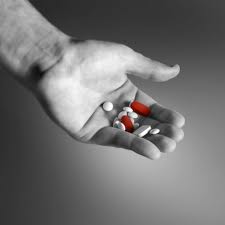Opiate Addiction Symptoms
As far as opiate addictions go, the days of the strung-out heroin user are quickly giving way to a “pill-popping” phenomenon of prescription pain pill users. Opioids, synthetic formulations of opiates, have proven effective treatments for pain conditions, from mild to severe. According to the U.S. National Library of Medicine, over 75 million Americans or 25 percent of the population experience conditions involving chronic and recurrent pain.
While effective as pain treatment remedies, opiates carry a high potential for addiction, even in cases where taken as prescribed. Some of the most commonly used pain medications include:
- Vicodin
- Percocet
- Dilaudid
- Duragesic
- OxyContin
- Demerol

Learn the signs of addiction so that you know when it’s time to seek help!
Part of the reason why opiates carry such a high addiction potential has to do with the way the body grows to tolerate increasingly larger doses of the drug. In the process, the body becomes dependent on opiate effects to function normally. This means, a prescribed dosage will only treat pain symptoms for so long before larger dosages become necessary.
Opiate Addiction Symptoms
Opiate addiction symptoms develop when the body doesn’t receive large enough doses to keep it running normally. Over time, users come to believe they need the drug in order to function in everyday life. As a result, a person starts to develop compulsive drug-seeking behaviors to the point where scoring and using drugs becomes the top priority in his or her life.
At the start of an addiction, users try to mask any signs of opiate addiction, which can make it difficult for others to notice the problem at its early stages. At this point, opiate dependence has set in where physical cravings for the drug persist. Once users reach a point where they believe they need the drug, opiate addiction has set in.
Eventually, physical and behavioral signs of opiate addiction will start to surface. Some of these signs include:
- Poor hygiene, slovenly appearance
- Excessive sleeping
- A change in social circle
- Frequent need to borrow money
- Changes in weight
- For IV users –
- Needle marks or track marks
- Wearing long sleeves in warm weather
When left untreated, a person’s compulsive drug-seeking behaviors start to jeopardize important areas in his or her life. Relationships start to deteriorate. Missed days at work result in job loss. Eventually, users get to the point where everything they once loved and cared about is gone, all because of addiction.
Opiate Addiction Withdrawal Symptoms
Once a person’s tolerance level for opiates increases, he or she will start to experience opiate addiction withdrawal symptoms when stopping or reducing dosage amounts. Agonizing and often intolerable withdrawal symptoms account for why it’s so difficult for people to stop using opiates.
Some of the most common opiate addiction withdrawal symptoms include:
- Abdominal cramping
- Irritability
- Ongoing drug cravings
- Anxiety
- Achy muscles
- Rapid breathing rates
- Diarrhea
- Decrease in appetite
- Runny nose
- Confusion
- Vomiting
- Tremors
With ongoing use, opiate addiction withdrawal symptoms increase in severity to the point where the risk of respiratory failure from overdosing becomes more and more likely.
 5 Behavioral Symptoms of Opium Addiction -
Opium is one of the longest known addictive drugs. Opium addicts will act in ways that show that they are dependent on the drug, resulting in a variety of adverse effects.
5 Behavioral Symptoms of Opium Addiction -
Opium is one of the longest known addictive drugs. Opium addicts will act in ways that show that they are dependent on the drug, resulting in a variety of adverse effects.  Why Does Opiate Addiction Sneak up on You? -
Many people start off being dependent on opiates before it quickly turns into an addiction.
Why Does Opiate Addiction Sneak up on You? -
Many people start off being dependent on opiates before it quickly turns into an addiction.  Coping with Addiction to Prescription Drugs -
Prescription drug usage and abuse rates in the US have skyrocketed in recent years. Addiction to prescription drugs is an increasing problem, but there are ways to cope with it.
Coping with Addiction to Prescription Drugs -
Prescription drug usage and abuse rates in the US have skyrocketed in recent years. Addiction to prescription drugs is an increasing problem, but there are ways to cope with it.  Am I Addicted to Opium? -
If you think that you may be addicted to opium, consider the list below of questions you can ask yourself.
Am I Addicted to Opium? -
If you think that you may be addicted to opium, consider the list below of questions you can ask yourself.  Warning Signs of Opioid Addiction -
Look out for the following warning signs of an addiction to painkillers so that the necessary help can be sought.
Warning Signs of Opioid Addiction -
Look out for the following warning signs of an addiction to painkillers so that the necessary help can be sought.